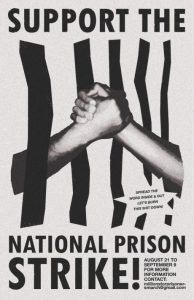I wrote my first original post here three years ago this month after talking with a comrade at a prison strike support event. In part, that event commemorated the killing of George Jackson and the Attica uprising. During the event my memory went back to composers Steve Reich and Frederic Rzewski and their musical statements of solidarity with the Attica inmates and the defendants from the earlier Harlem “fruit stand” riot of 1964. In the course of conversation I realized I’d outlined the post. See Attica: Coming Together.
This week marks the fiftieth anniversary of Jackson’s murder and the Attica revolt that followed.
Continue reading “Attica @ 50”







 The
The